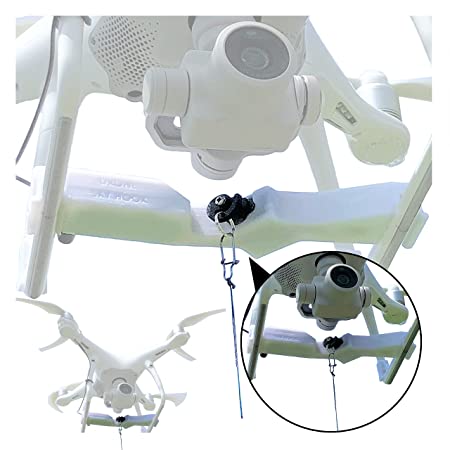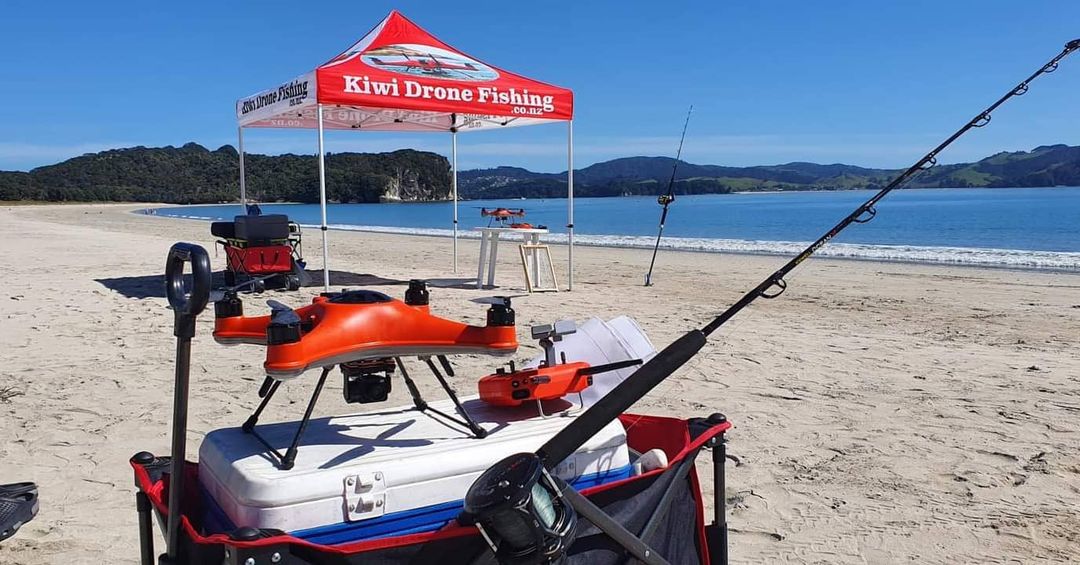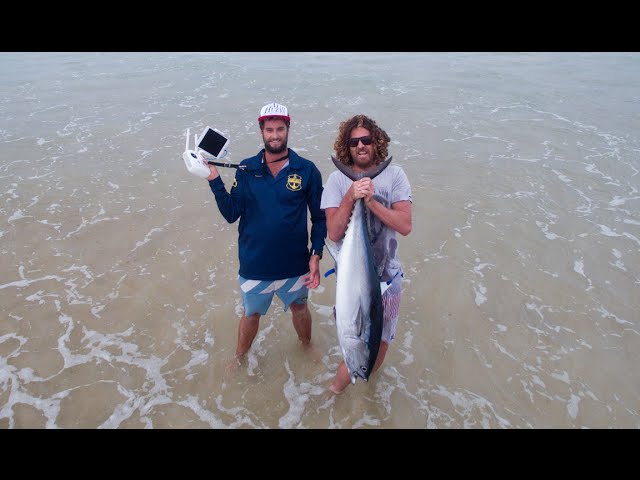
We will be looking at the basics and how to use a drone fishing rig. We will also discuss what to look out for when selecting your drone, battery life and payload. Next, we will discuss how to get the best drone. Keep reading to learn more. You'll soon own the drone you desire! Let's start!...and maybe catch a few fish!
Basic drone fishing equipment
When you are ready to start drone fishing, the first thing you need is a good set of hooks. The fishing line should not be more than twice the length. It should be mono- or braided. You should tie a Uni knot or Cat's Paw Loop to it. You'll also need a sinker between 2-8 ounces and hooks for attaching to each second section of your backbone. Finally, attach the lead loop of your snap swivel to your drone.
There are many methods to make a fishing helicopter. An easy way to make a fishing drone is to attach a hook onto the drone's landing gear. Then spin the line until the line is released. Droppers and drop lines can be used to keep the fishing net below the drone. Droppers are a way to keep the main line from getting caught up in propellers. The fishing drones can also be equipped with accessories, such as a battery pack and a dock.
You will need additional equipment once you have bought the basic drone fishing gear. You'll need a fishing line of approximately 700 meters and a bait-dropping tool. These are optional, but they will make drone fishing more fun. A drone will provide you with a clearer view and make it easier to spot fish.

Payload on drone fishing gear
If you're planning on catching a fish using a drone, you need to be aware of the safety measures that need to be taken. It is not a good idea to fly your drone in heavy winds or rain. Here are some suggestions:
First, ensure your drone has a strong carrying capacity. If you load it with heavy lures and braided line, it will not be stable. The wind could also cause the drone to drift off course if it is fishing in a coastal area. It is important to review local regulations and laws. Some may not allow you to fish from a drone. If you decide to fish with your drone, make sure it has a good carrying capacity.
Next, decide what accessories you will mount on your drone. A good rule of thumb is to use a rigging system that has a central attachment point to reduce weight distribution problems. The most suitable attachment points are the motor struts, landing gear, and legs of the drone. You should avoid attaching anything to the camera or to the gimbal. This can cause damage. A simple solution is to tie a length of fishing line from one corner to the other. To stop the line from falling out, you can attach tape to it.
Battery life for drone fishing gear
Be sure to check the batteries, and other gear before you go out fishing with your drone. This will ensure that your drone doesn't run out of battery and allow you to concentrate on fishing rather than recharging. You may be able to charge your drones using solar panels or batteries from your car. It is a good idea to start with fully charged batteries. This will ensure your drone is ready for flight as soon as your reach your fishing spot.

The drone's flight time is another important aspect to consider. While some drones can fly longer than others, the average drone can fly for around twenty-two mins. This is great if the drone can fly for hours on the water. You should also be aware that drones with low endurance are inoperable, making it difficult to catch fish.
Once you have set up your fishing rig, attach your fishing line clip to the legs of the drone, or to the motor struts. Then, attach the bait to the fishing line. Make sure that you lock your reel before you fly your drone. Once you are ready, unlock it. You will feel tension build up when the line is pulled out. The drone will then drop the bait into water. Remember to charge the battery after every use, or it may not work properly.
FAQ
Are drones allowed at public events?
As long as you comply with the rules, drones can be flown anywhere. If you want to fly your drone in public events like parades, festivals, concerts, etc., you must get permission from the event organizers.
What kind of batteries is a drone using?
The majority of drones use lithium-ion cells. A drone typically uses between 3 to 6 volts.
Is it against the law to fly a helicopter?
Yes, it is illegal to fly drones in some countries like Australia, Canada and New Zealand. It is legal in countries such as France, Italy Netherlands, Poland and Russia.
Does the FAA regulate drones
The FAA oversees all aspects of drone operations, including safety standards, certification requirements, and licensing procedures.
Are Drones Banned Where?
The FAA has banned drones in areas near airports and stadiums. However, they allow them to fly nightly using GPS technology.
Where can I buy a drone?
Many different drones are available online. Some people prefer buying their drones through Amazon, eBay, or Walmart. Others prefer to purchase their drones directly at the manufacturer.
What are the laws around flying drones?
The Federal Aviation Administration (FAA), which regulates all aspects drone operations in the United States of America, is responsible for them. A certificate issued by the FAA is required to commercially operate a drone. After that, you must pass an exam and complete a course to learn piloting skills. You will then need to pay an agency fee.
Statistics
- According to ZipRecruiter, the minimum hourly wage of drone pilots is $20. (thedroneu.com)
- Research and Markets predict a growth rate of 51.1% over the next five years. (thedroneu.com)
- According to industry research from ZipRecruiter , there are 10 cities where the typical salary for a Drone Pilot job is above the national average. (dronesgator.com)
External Links
How To
How to Fly Drones at a Beginning Level
A drone can be used to fly remotely controlled aircraft for photography, surveillance, scientific research, hobby and commercial purposes. Drones are a technology that has been around since World War II. DJI's Phantom series of quadcopters was the first to be commercially used. Many types of drones have been made available since then, from beginner-friendly models such as the Parrot AR Drone 2.0, to high-end multi-rotor craft such as the DJI Mavic Pro.
There are several ways to fly a drone, including;
-
Remote control: This uses a remote control device that attaches to your hand and allows you control the drone along its flight path. There are two types of controllers available: joysticks and on/off switches.
-
Manual Control- This allows you to control your drone remotely via GPS coordinates. The app will give you instructions.
-
Autonomous Flight: This means that the drone will take care of all the piloting. The drone is able to fly autonomously, without the need for human intervention. It must have a builtin camera, sensors capable of taking images and data to enable autonomous flight.
-
Triggered flight - This is similar to manual control except that the pilot sets up a preprogrammed route and the drone follows the route until it reaches its destination. Once the programmed route is completed, the drone lands automatically and returns back to the base.
-
Landing Gear: Some drones have landing gear that allows them safely to land in case they lose power or run low on battery.
-
Goggles – Pilots often wear goggles while flying to keep themselves safe from any debris.
-
Camera - Some drones can be equipped with cameras which enable you to capture photos from the sky.
-
Obstacles. Some drones can have obstacle avoidance technology that stops them from hitting obstacles.
-
Speed – Some drones can reach speeds in excess of 40 mph.
-
Battery Life – Most drones will last 20 minutes to three hours depending on how powerful they are.
-
Distance - Some drones can travel up 30 miles depending on the model.
-
Power source – Some drones require external power sources, others require internal batteries.
-
Weight - Some drones have a weight of less than 1 pound and others weigh 4 lbs.
-
Size - Drones come in many sizes, from small gadgets that fit in one's hands to large craft that weigh more than 50 lbs.
-
Price - Drones come in a variety of price categories, including high-end models which can run into the thousands and low-cost options that can start at $100.